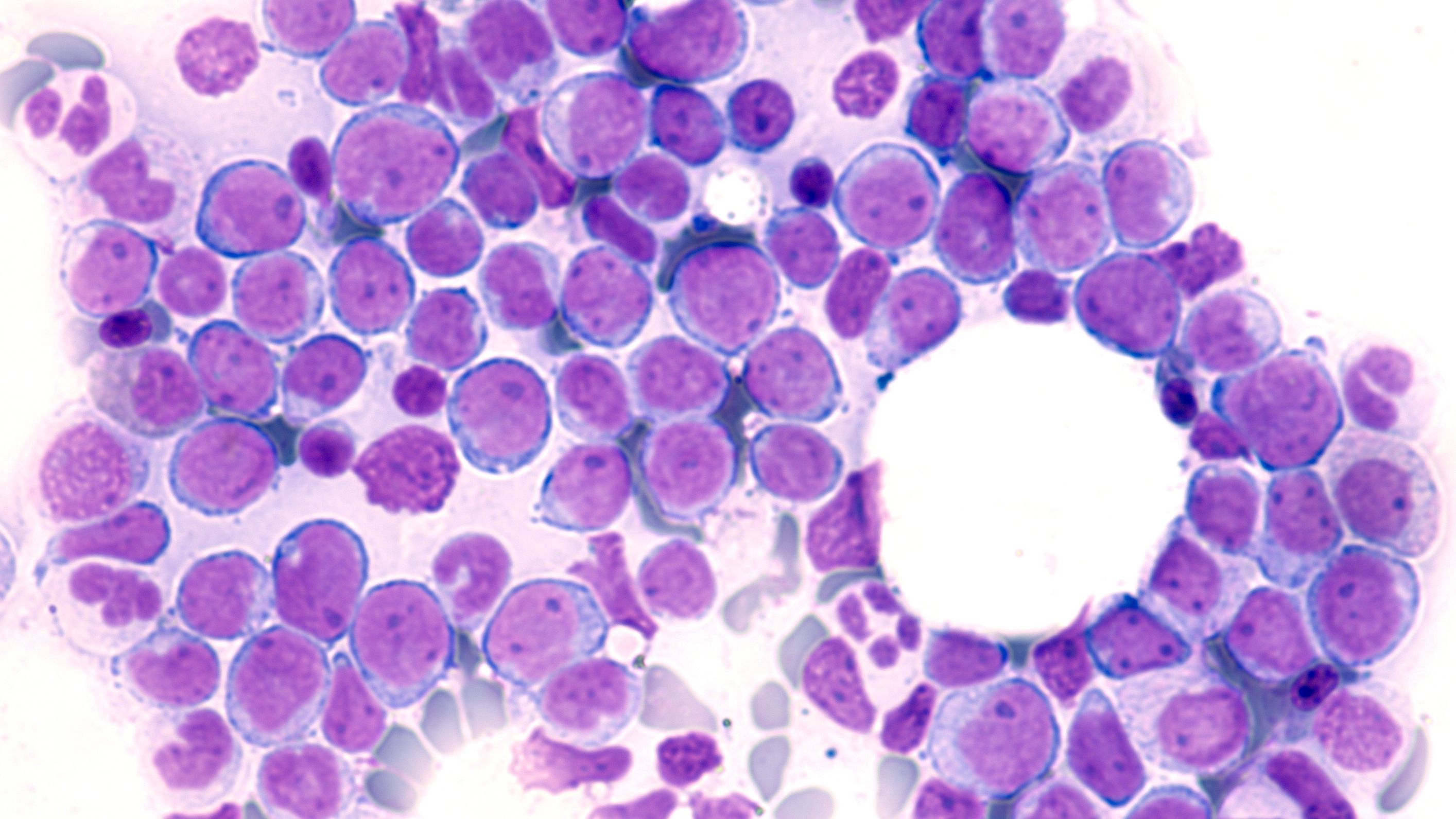MURANO Shows Worse Outcomes in R/R CLL When Venetoclax is Stopped Early
A fresh look at MURANO data, released this week at the American Society of Clinical Oncology 2020 Annual meeting, shows the poor outcomes that result when patients halt treatment for good, and highlight the need to manage doses carefully to avoid toxicity.

When the first results from MURANO were published in in the New England Journal of Medicine in 2018,1 they showed the combination of venetoclax (Venclexta) with rituximab produced superior progression-free survival in patients with relapsed or refractory chronic lymphocytic leukemia, compared with bendamustine-rituximab, if patients took venetoclax for two years.
Unfortunately, a significant number of these patients interrupt their course of venetoclax or stop taking it. A fresh look at the MURANO data, released this week at the American Society of Clinical Oncology 2020 Annual meeting,2 shows the poor outcomes that result when patients halt treatment for good, and highlight the need to manage doses carefully to avoid toxicity.
Data on discontinuation of venetoclax, featured in a poster to be released today, will also be part of a highlights session on hematologic malignancies set for Virtual ASCO 2020 on Saturday.
Venetoclax, taken by mouth, inhibits BCL-2, a key protein that regulates cell death; the protein is overexpressed in several blood cancers and can make them resistant to chemotherapy.
The data being examined this weekend shows that among the 194 patients in the venetoclax-rituximab arm of MURANO study through May 8, 2019, 54 patients, or 28%, stopped the drug completely for the following reasons:
- adverse events (AEs), 29
- disease progression, 12
- withdrawal from the study, 5
- physician decision, 3
- death, 2
- other, 2
- noncompliance, 1
The median time on venetoclax before stopping due to AEs was 11.3 (0.5-24.6) months; for disease progression, it was 17.1 (4.6-25.1) months. According to the study, “greater cumulative exposure” significantly reduced the risk of either a PFS or overall survival (OS) event. The hazard ratio (HR) for PFS was 0.93, 95% CI: 0.88-0.99, P = .0168; for OS, the HR = 0.85, 95% CI: 0.79-0.92, P < .0001.
A table included in the abstract showed that among patients who discontinued venetoclax for any reason the PFS HR was 5.98, 95% CI: 3.31-10.82, P < .0001. For those who discontinued due to AEs, the PFS HR was 5.82, 95% CI: 2.39-11.57, P < .0001.
Treatment interruption for AEs was seen in 134 of the 194 patients, mostly due to neutropenia (84/194, or 43%). The median time of treatment interruption was relatively short at 9 days, and short interruptions did not affect PFS or OS.
The authors report, “These data highlight the importance of effective control of toxicity to realize the full benefit of [venetoclax-rituximab] treatment.”
The key to management of venetoclax has been the development of the 5-week dose escalation schedule, as well as dosing adjustments, both of which help prevent tumor lysis syndrome. Data reported in 2019 by the American Association of Cancer Research on 297 patients “provide insights into current use of venetoclax in clinical practice, including TLS rates observed … We identified opportunities for improved adherence to TLS risk stratification and prophylaxis, which may improve safety.”3
Genentech and AbbVie supported the study.
References
1. Seymour JF, Kipps TJ, Eichhorst B. Venetoclax-rituximab in relapsed or refractory chronic lymphocytic leukemia. N Engl J Med 2018;378:1107-1120. doi: 10.1056/NEJMoa1713976
2. Mato AR, Sharman JP, Biondo J. Impact of premature venetoclax (Ven) discontinuation/interruption on outcomes in relapsed/refractory (R/R) chronic lymphocytic leukemia (CLL): Phase III MURANO study results. J Clin Oncol 2020;38:(suppl; abstr 8028) doi: 10.1200/JCO.2020.38.15_suppl.8028
3. Roeker LE, Fox CP, Eyre TA, et al. Tumor lysis, adverse events, and dose adjustments in 297 venetoclax-treated CLL patients in routine clinical practice. Clin Cancer Res 2019; 15:25(14):4264-4270. doi: 10.1158/1078-0432.CCR-19-0361
Using the 'Pathway' Approach to Shorten the Time Between Cancer Diagnosis and Treatment
November 16th 2022In this episode of Tuning In to the C-Suite, Briana Contreras, editor with Managed Healthcare Executive spoke with Dr. Yuri Fesko, oncologist and vice president of Medical Affairs at Quest Diagnostics. In the conversation, Dr. Fesko addressed the ongoing issue of long gaps of times between receiving a diagnosis for a type of cancer and finally getting the treatment for it. Dr. Fesko shared the benefits a number of sectors receive when treating patients sooner and the steps to get there.
Listen
Microplastics, Diet and More: What’s Causing Early-Onset Cancer?
March 18th 2025In a February 2025 Time magazine cover story, Jamie Ducharme reports on this atypical and disquieting trend. Ducharme cites a 79% increase in early-onset cancer diagnoses and a 28% increase in cancer-related deaths in this age group from 1990 to 2019.
Read More
CAR T-Cell Therapy Cuts Costs, Reduces Treatment in Mantle Cell Lymphoma
March 13th 2025In a real-world study, researchers found this data by comparing treatment patterns, healthcare resource utilization, and costs between patients receiving CAR T-cell therapy and those treated with the non-CAR T standard of care.
Read More